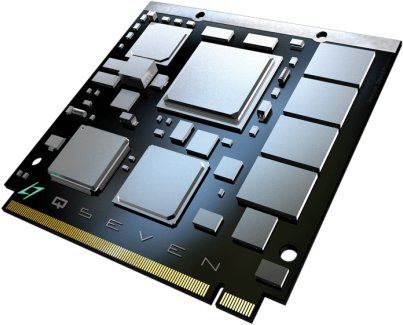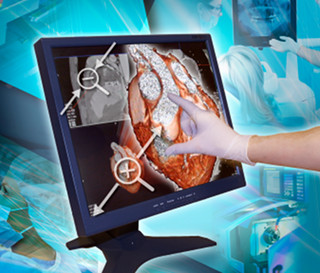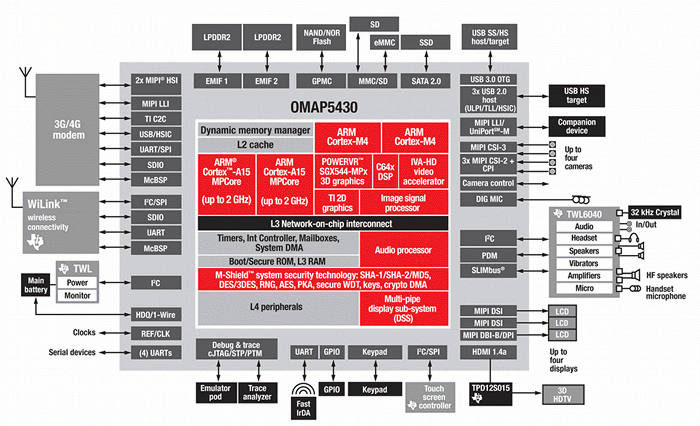QSeven is a new standard (QSeven Specifications 1.20) that provides pinout, electromechanical description and implementation guidelines so that the main boards (with the MPU) be easily exchanged. So that you can a larger board with all connectors and a QSeven boards based on Intel icore, Atom or other processors based on ARM that simply fits into that larger board. The QSeven concept is defined as follows: Qseven Concept The Qseven concept is an off-the-shelf, multi vendor, Single-Board-Computer that integrates all the core components of a common PC and is mounted onto an application specific carrier board. Qseven modules have a standardized form factor of 70mm x 70mm and have specified pinouts based on the high speed MXM system connector that has a standardized pinout regardless of the vendor. The Qseven module provides the functional requirements for an embedded application. These functions include, but are not limited to, graphics, sound, mass […]
Video Wall with Beagleboards and ffmpeg
There was a 6-Screen Video Wall at Embedded World 2011, powered by 6 Beagleboard xM (based on Texas Instruments OMAP 3 running @ 1Ghz – Cost: 149 USD / piece), connected vi Ethernet. In the video they explain that the system is running Linux Ångström and the video is played and synchronized over Ethernet with ffmpeg. After doing some research on how to do this, they are probably using omapfbplay with netsync enabled which you can compile as follows: NETSYNC=y OMAPFB=y make However, if you are using Linux Ångström, omapfbplay with netsync is enabled by default. This can also be done with the first version of Beagleboard (without Ethernet) via USB. They can also control each display independently and synchronize the mouse and keyboard thanks to Synergy. Jean-Luc Aufranc (CNXSoft)Jean-Luc started CNX Software in 2010 as a part-time endeavor, before quitting his job as a software engineering manager, and starting […]
Toshiba Resistive Multi-touch Screen
Toshiba developed a proprietary algorithm for multi-touch resistive touchscreen and they exhibited a demo at Embedded World 2011. The hardware is based around Toshiba TMPA900 (ARM926EJ-S core running at 200 Mhz) and runs embedded Linux. This type of system is aimed at home appliances (washing machine, refrigerator…), industrial and medical applications and can be used with a pen, stylus or gloved hand. For example, a doctor wearing gloves would be able to use multi-touch gestures on such screens whereas it would not be possible on capacitive touchscreens or standard resistive touchscreens. It was not specified but I suppose that technology would only support 2 points since they only showed two fingers gesture in the demo. This should not be a problem for the type of application. An another advantage of this solutions is that it brings multi-touch technology to cost sensitive industrial applications. The technology is still under development and […]
Telechips 8803 based Android Tablet
Mobile Tech, a Hong Kong based company, showcased two Android tablets (8″ and 10″) based on the new Telechips 8803 processor (ARM Cortex A8) running at 1.2GHz that supposedly offers better performance than the first Galaxy Tab. Both devices use an Innolux capacitive touchscreen, the 8″ version has a resolution of 800×600 and the 10″ 1024×768, both have 512MB RAM and 4GB Flash memory, HDMI output, 802.11n Wifi and optionally 3G and a 1.3MP front camera. They plan to support Android 2.3 (Gingerbread) with this version of the hardware for the time being. Honeycomb will need more RAM (at least 1GB) and more time for the porting with Telechips TCC8803. They only expect Android 3.0 to be ready by the end of the year on that platform. The 8″ version is already in mass production, their price target is 300 Euros retail. The 10″ version should be ready in May […]
Android 2.2 IETV Smart Player by Shenzhen Ider Technology
Shenzhen Ider Technology (亿典华科技) showcased two Android 2.2 media player prototypes based on a Samsung ARM Cortex A8 Processor (Probably Samsung SOPC100) at CeBit 2011. They feature an Ethernet port, one or several video output ports(HDMI / Component / Composite), several USB Host ports and can output up to 1080p. The low cost version on have HDMI ouput, whereas the other version has HDMI, component and composite. Both devices support wireless mouse and keyboard and come with a magic remote (wii-like) to control Android. This is interesting to note that whereas other set-top boxes doe not use the Android home as there main menu, those media players do. The low cost version would be around 60 to 80 USD for order larger than 1000 pieces and the higher cost version slightly over 80 USD. Jean-Luc Aufranc (CNXSoft)Jean-Luc started CNX Software in 2010 as a part-time endeavor, before quitting his job […]
MHL: Mobile High Definition Link
Mobile High Definition Link (MHL) is a new standard that allows to connect your MHL-enabled phone to an MHL-enabled device (e.g. a TV) to output video, connect power and allows communication between both device with only one cable (micro-usb to HDMI cable with MHL signalling). The MHL Consortium has just been setup last year by Sony, Toshiba, Samsung, Silicon Image and Nokia. The MHL™ Consortium is committed to enhancing the multimedia capabilities of mobile and portable devices. MHL specification version 1.0 is an HD video and digital audio interface for connecting mobile phones and portable devices to HDTVs and other home entertainment products. It utilizes established connectors and features a single cable with a 5-pin interface, supports 1080p HD video and digital audio, and simultaneously provides power to the mobile device. It also enables the TV remote to control the mobile phone and access its contents. They have a few […]
Qualcomm Augmented Reality Challenge Winner: Paparazzi
Qualcomm announced the winner of their augmented reality challenge developed with Qualcomm Augmented Reality Software Development Kit (QCAR SDK): The top prize of $125,000 was awarded to a team of two developers from Lithuania, Paulius Liekis and Arminas Didžiokas for Paparazzi, an interactive augmented reality game where the player becomes a virtual paparazzo and sneaks pictures of a vain celebrity before he gets agitated and attacks the photographer. The second (50,000 USD) and third (25,000 USD) prizes were also awarded to augmented reality games respectively Inch High Stunt Guy by Defiant Development Pty Ltd. (Australia), a game where the player arranges various obstacles to enable a stuntman to successfully jump his motorcycle through a hoop and Danger Copter by Alex Beachum, Jonghwa Kim, Jason Mathias, Kedar Reddy and Evan Sforza (USA), a gaming adventure where the player becomes a helicopter pilot who maneuvers a water-spouting chopper to extinguish fires and […]
Texas Instruments OMAP 5 based on ARM Cortex A15 Core
Texas Instruments announced its new generation of mobile chips OMAP 5 based on the latest ARM core Cortex A15. Press release excerpt: DALLAS (Feb. 7, 2011) /PRNewswire/ — Texas Instruments Incorporated (TI) (NYSE: TXN) announced today the next generation of its popular OMAP™ family: the OMAP 5 mobile applications platform, which is positioned to transform how mobile devices, such as Smartphones, tablets and other mobile form factors are used, making them even more valuable in our daily lives. … The 28 nanometer OMAP 5 applications processors carry on the OMAP family tradition of delivering significant increases in performance and functionality, while lowering power consumption compared to their predecessors. Specifically, they offer up to 3x processing performance and five-fold 3D graphics improvement, yet provide a nearly 60 percent average power reduction compared to a sample user experience on the OMAP 4 platform. Additionally, the OMAP 5 platform’s software is designed for […]








